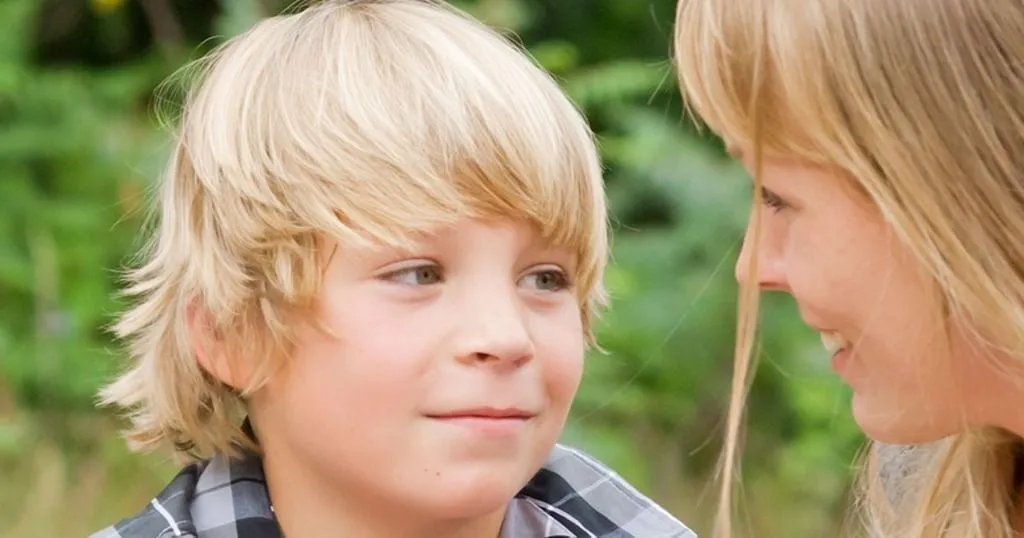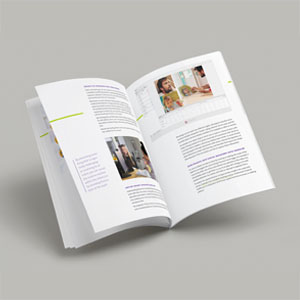What does an infant’s gaze tell us about how hungry they feel?
McNally and her colleagues developed a coding scheme to observe infant gaze behavior and applied it in a study of complementary feeding.
Posted by
Published on
Thu 11 Apr. 2019
Topics
| Nutrition | Coding Behavior | Communication | Infants | Parent-child Interaction | Parent-infant Dyads | The Observer XT | Video Observation |

Research suggests that infant gaze can indicate hunger and satiation. Understanding these needs at an early age supports the development of a healthy appetite. McNally and her colleagues developed a coding scheme to observe infant gaze behavior and applied it in a study of complementary feeding.
Gaze behavior signals interest in food
From a very early age, we use our gaze to communicate with others. Gaze is involved in predicting intentions, understanding emotions, and directing someone’s attention. Furthermore, this non-verbal behavior provides clues on what we feel and what we’re interested in.
Researchers focusing on nutrition use this valuable information to study how visual processing influences our eating habits. For example, studies have found that our gaze towards food images varies according to how hungry we feel, and that gaze duration is associated with how much we eat. Findings like these have important implications for the development of a healthy appetite, and may even play a role in reducing the risk of obesity.
Measuring infant gaze
Despite this research potential, gaze has received little attention in the study of infant feeding. Only a few studies examined links between infant gaze and feeding state, with observations that were restricted to milk feeding. McNally and her colleagues argue that if infant gaze is examined more systematically, it could provide new insights into the signaling of infant hunger and satiation.
These insights can be especially meaningful in the transition to complementary feeding, when parental responsiveness is an important factor in the development of healthy eating behaviors. Therefore, the researchers decided to develop a coding scheme and use it to examine gaze behavior in the context of complementary feeding.
Gaze behavior during feeding
Specifically, the researchers were interested in the way infant gaze changes during meals. They predicted that gaze behavior differs between the start and end of a meal, and between a main meal and dessert, as a result of satiation.
Research also suggests that a change in the sensory qualities of a meal renews appetite despite increased levels of satiation. Therefore, they also expected to find similar patterns of gaze change during both the main meal and the dessert.
Reliability of gaze observations
Infant gaze was observed in twenty parent-infant dyads. The infant group consisted of eight boys and twelve girls, between six and eighteen months old. Infants were either raised using self-feeding methods or through spoon feeding by a parent.
They were filmed during two separate feeding episodes, eating a familiar meal at their regular lunchtime. The video materials of the first, middle and last twenty percent of each meal were used to observe frequencies of different gaze behaviors. This video data was coded using The Observer XT.
As part of their study, the researchers developed and tested The Infant Gaze at Mealtime (IGM) coding scheme. The IGM describes different gaze directions, such as ‘gazing at food’ or ‘gazing at caregiver.’ A random selection of available video clips was coded with the IGM by three different observers.
Using The Observer XT, they then calculated the initial inter-rater reliability for each gaze. After reviewing disagreements between coders, results across all observations showed excellent inter-rater (ICC=.95) and test-retest (ICC=.97) reliability.
Changes in infant gaze
Analyses of gaze behavior during meals confirmed the hypothesis that infant gaze changes as a function of satiation. As meals progressed, infants spent less time gazing at food and more time doing exploratory gazing.
These changes were found within both meals, as well as between the main meal and the dessert. Also, hunger related gazing increased when infants were exposed to dessert, confirming the hypothesis of sensory specific satiety.
The results of this study suggest that the IGM is a reliable tool to examine infant gaze. Further research may be needed, however, to ensure that the coding system accurately captures gaze behaviors from a wide range of infants. Moreover, observations from this study are in line with predictions that gaze behaviors signal hunger and satiation.
Understanding these processes, both in milk and complementary feeding, helps to support the development of responsive feeding interventions and healthy eating behaviors.
Reference
McNally, J.; Hugh-Jones, S.; Caton, S.; Vereijken, C.; Weenen, H.; Hetherington, M. (2019). The eyes have it: Infant gaze as an indicator of hunger and satiation. Appetite, 133, 353-361.
Related Posts

Using augmented toys to facilitate play in children with visual impairments

Become and stay aware about children with autism


